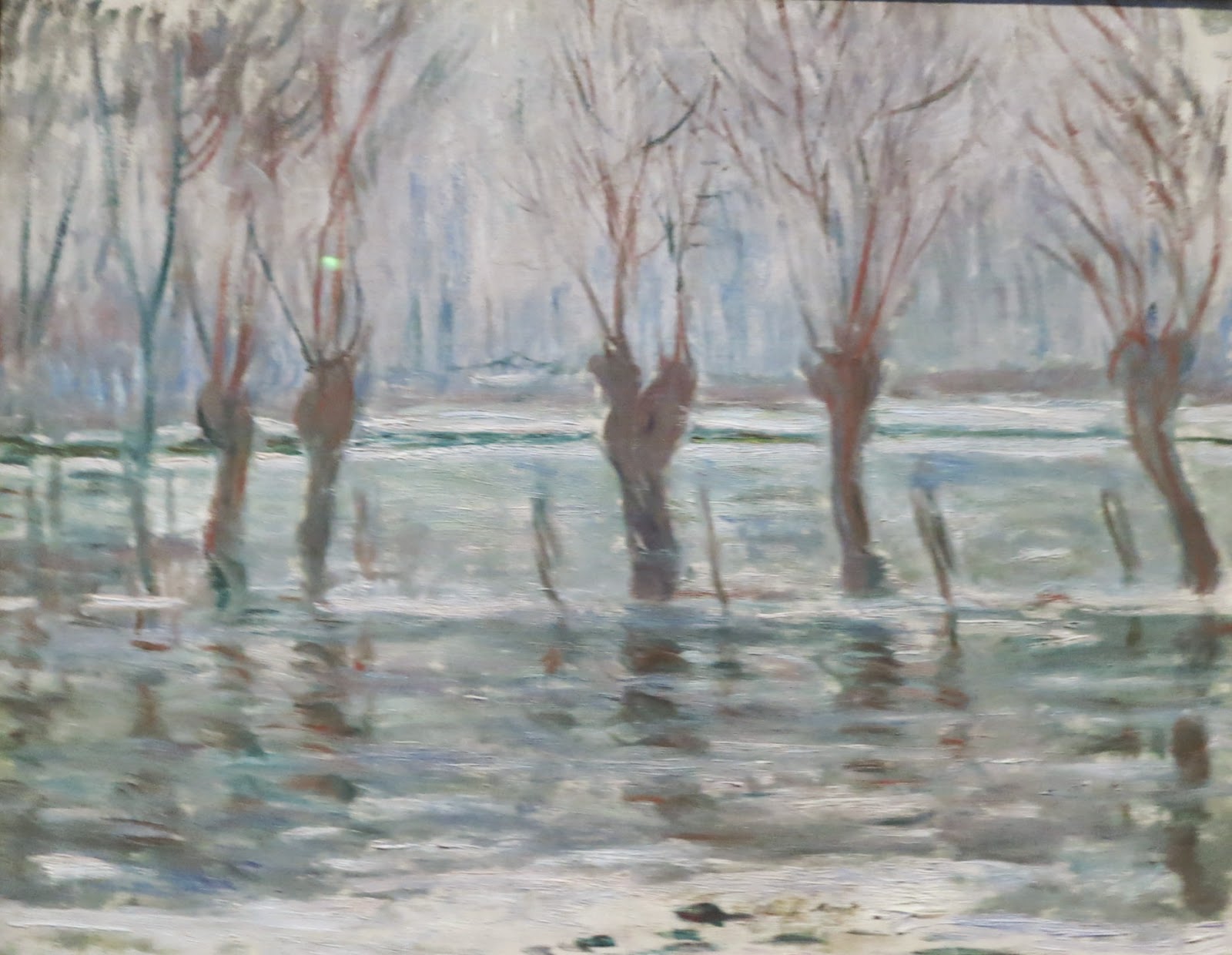Claude Monet at the National Gallery, Trafalgar Square.

The Beach at Trouville, 1870

The Gare St-Lazare, 1877
What interested Monet when he was painting this picture, was not the railway station as a place where human beings meet or leave - he was fascinated by the effect of light streaming through the glass roof on to the clouds of steam and by the forms of the engines and carriages emerging from the confusion.
Flood Waters, 1896
Monet declared that his subject was not a view but the act of seeing that view - a process of mind, unfolding subjectively, never fixed, always becoming. In order to achieve this, his subject had to be known, available, so the garden at Giverny was constructed.
His work was already moving away from the deep field of view in his earlier Impressionist canvases, as seen in the first two paintings of this post. What followed was a flattening of view and the study of one subject at different times of day.
The Water-Lily Pond, 1899
The bridge in Monet's water garden, seen from the pond itself.
The Water Garden at Giverny
In the Waterlilies paintings the flattening of view is taken further. The paintings are a long inspection of a drowned, reflected world, in which no sky is visible except by reflection: the water fills the whole frame. There is no foreground, no background; instead a web of connections. In these near-abstract pictures, forms dissolve to the point of disintegration.
Water-Lillies, Setting Sun, 1907
The pink and yellow rays of the setting sun shimmering on the still surface of the pond, and the inverted reflection of a weeping willow over which water-lilies float.





No comments:
Post a Comment